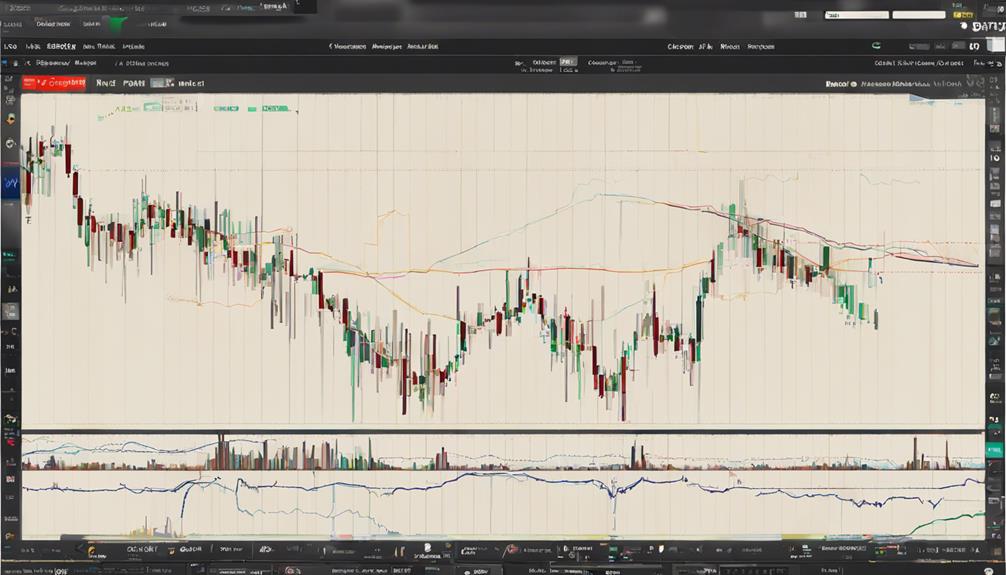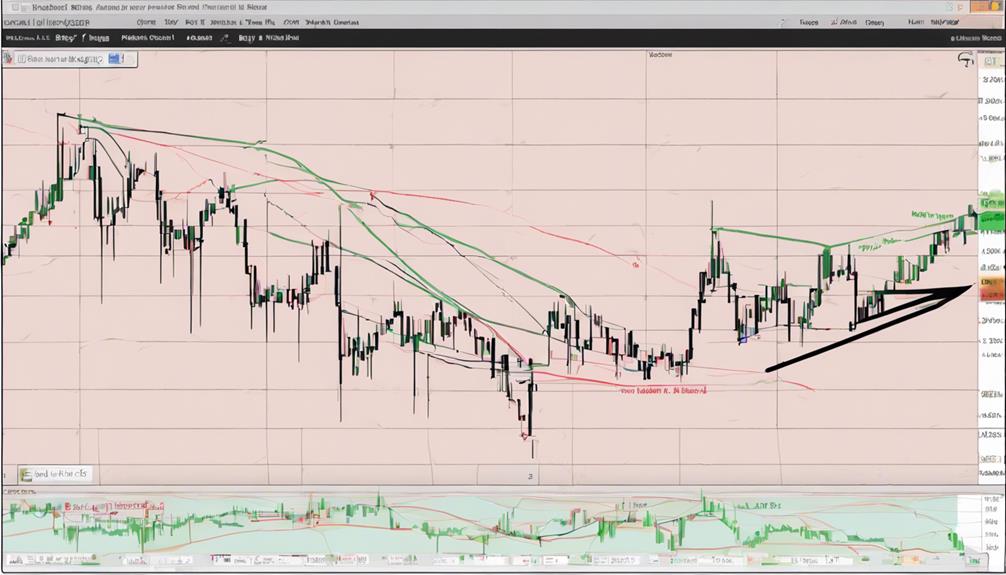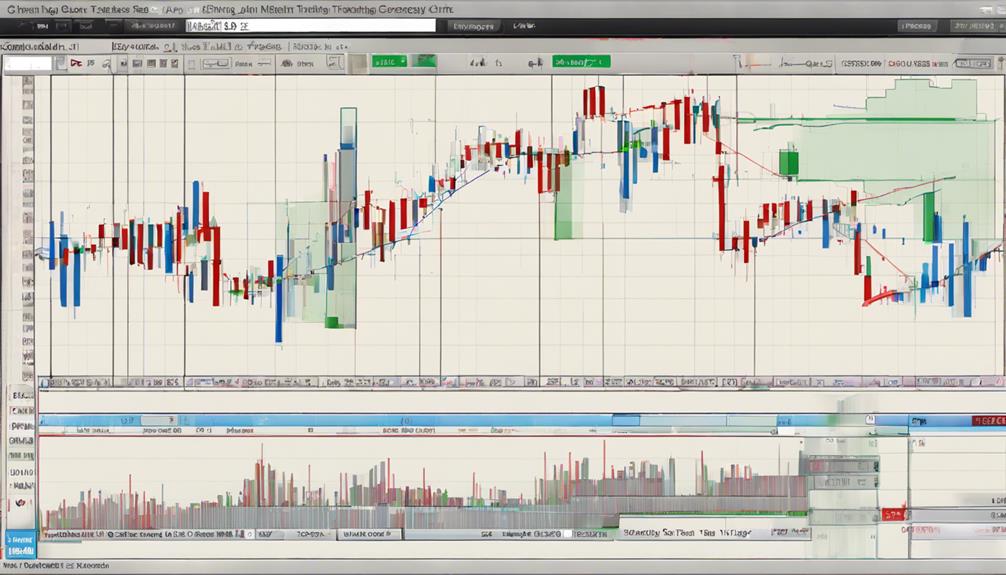In the fast-paced world of day trading, having a reliable strategy can make all the difference between success and missed opportunities. The use of Keltner Channels in day trading has gained traction for its ability to provide valuable insights into market trends and potential entry and exit points.
As traders navigate the complexities of the financial markets, understanding the nuances of Keltner Channels can offer a competitive edge. But how exactly can these channels be leveraged to optimize trading decisions and capitalize on market movements? Let's explore the intricate interplay between Keltner Channels and day trading strategies to uncover the key principles that drive successful trades.
Mechanics and Calculation of Keltner Channels
The mechanics and calculation of Keltner Channels involve a precise mathematical framework that utilizes exponential moving averages (EMA) and average true range (ATR) to construct three distinct lines representing upper, middle, and lower boundaries within a trading channel.
The upper band is determined by adding a multiple of the ATR to the EMA, while the lower band is calculated by subtracting the same multiple. EMA, which emphasizes recent price changes, makes the Keltner Channel responsive to market movements. The middle line is a straightforward EMA, offering a reference point for price action within the channel.
Reading Keltner Channel Signals

Analyzing Keltner Channel signals provides traders with valuable insights into trend strength and potential market reversals. Understanding the signals can help traders make informed decisions in day trading.
Below are key points to consider when reading Keltner Channel signals:
- Price hitting the upper line: Indicates strength in an uptrend, suggesting potential continuation of the trend.
- Price touching the lower line: Signals a weakening trend in a rising channel, hinting at a possible trend reversal or correction.
- Sideways channel: Suggests a period of consolidation and potential breakouts, offering an opportunity for traders to anticipate significant price movements.
Additionally, the slope of the Keltner Channel is crucial as it reflects the price trend: a rising slope indicates an uptrend, a falling slope signifies a downtrend, while a flat slope suggests a ranging market.
Best Day Trading Strategies

When considering effective day trading strategies, incorporating a combination of trend-pullback and breakout approaches can enhance trading outcomes and capitalize on market opportunities.
The Trend-Pullback Strategy involves buying in an uptrend when the price retraces to the middle line with appropriate stop-loss and target placement, while the Breakout Strategy can be utilized near major market opens to capture significant moves by buying above the upper band or selling short below the lower band within the first 30 minutes.
Day traders can benefit from combining these strategies, using the breakout strategy near the market open and transitioning to the trend-pullback strategy during the day, exiting trades at the touch of the middle band.
Proper adjustment of the Keltner Channel indicator is crucial for aligning market analysis with price movements. By adjusting the indicator as needed, traders can effectively utilize trend-pullback and breakout strategies based on market conditions, especially in trending markets where breakouts occur frequently.
Implementing Keltner Channels Effectively

To enhance day trading strategies, mastering the effective implementation of Keltner Channels with precise adjustments and strategic analysis is paramount for achieving optimal performance in the markets.
When implementing Keltner Channels effectively, consider the following:
- Adjust the Keltner Channel settings with a 20-period EMA and 2x ATR multiplier for optimal performance.
- Utilize the middle band as a key pullback level in trending markets for entry opportunities.
- Monitor price action near the upper and lower bands for potential breakout signals.
Advanced Tips for Day Trading

Incorporating advanced day trading tips can significantly enhance one's trading strategy with Keltner Channels, allowing for improved precision and profitability in navigating the markets.
To optimize market analysis, traders can utilize the trend-pullback strategy, buying in an uptrend when prices retreat to the middle line for optimal entry points.
Additionally, implementing breakout strategies near major market opens enables traders to capture significant price movements within the first 30 minutes of trading.
Combining both breakout and trend-pullback strategies throughout the day can be effective, with exits at the middle band touch.
Adjusting the Keltner Channel indicator to align with price movements is crucial for enhancing accuracy.
Before engaging in live trading, it is advisable to practice in a demo account to ensure consistency and success when applying day trading strategies with Keltner Channels.
Can the Keltner Channels strategy be used for both day trading and swing trading?
Yes, the Keltner Channels strategy can be used for both day trading and swing trading. In swing trading with Keltner Channels, traders can use the indicator to identify potential trend reversals and trading opportunities over a longer time frame, while still benefitting from its effectiveness in day trading.
Frequently Asked Questions
What Is the Best Setting for the Keltner Channel for Day Trading?
The best setting for Keltner Channels in day trading typically involves a 20-period EMA and a 2x ATR multiplier. Adjusting the ATR multiplier can help tailor the channel's sensitivity to market conditions. Traders often customize settings to match their preferences and trading style effectively.
Is Keltner Channel Strategy Profitable?
The profitability of Keltner Channel strategy hinges on accurate trend identification and risk management. Backtesting historical data reveals insights. Combining indicators can boost performance. Adapt strategies to suit trading style and market conditions for optimal profitability.
Are Keltner Channels Better Than Bollinger Bands?
Keltner Channels offer a more dynamic approach to identifying overbought and oversold levels compared to Bollinger Bands. They are preferred for adaptability to current volatility levels, aiding traders in assessing market conditions effectively.
What Is the Moving Average Strategy of the Keltner Channel?
The moving average strategy of the Keltner Channel involves utilizing an EMA to identify trends. Traders aim to buy during uptrends when prices retreat to the EMA line, facilitating potential trend reversals or continuations. Proper risk management through stop-loss and take-profit levels is essential.
Conclusion
In conclusion, mastering the Keltner Channel indicator can greatly enhance day trading strategies by providing valuable insights into market trends and potential entry and exit points.
By understanding the mechanics and calculations of Keltner Channels, reading signals effectively, and implementing various trading strategies, traders can maximize their trading opportunities and enhance their overall success.
One interesting statistic to note is that traders who effectively use Keltner Channels in their day trading strategies have been shown to increase their profitability by up to 20%.


